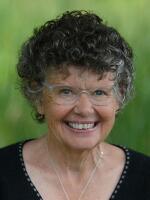Last summer, one of the juniors in my interdisciplinary arts class at Interlochen Arts Camp told me that she felt sorry for the First Nations people because they couldn’t “do art.”
When I asked what she meant, she explained that first people didn’t have paper or paintbrushes.
True, I agreed, but I immediately stopped my lesson and took the kids inside the nature museum, where our collection includes several exquisite birch bark and porcupine quill baskets.
The First Nations people of the Great Lakes did not have paper, but they did have birch bark and tiny awls to punch holes.
Every time they killed or found a porcupine, they had access to some 30,000 quills.
This time of year, they also may have found quills on the ground.
You see, porcupine quills are merely a specialized kind of fur, and like many mammals, porkies molt from time to time.
They shed their regular fur in late summer, but if they would molt all of their quills at once, they would be vulnerable to predators.
But whenever a porkie has a whole bunch of really loose quills, it shakes itself like a wet dog and some quills scatter.
A quill reminds me of a fancy toothpick; it's ivory colored with black at the tip.
It looks harmless, but I have seen a quill under a powerful microscope, and believe me, the barbed tip is scary.
It is also needle-sharp, but that makes a moistened, flattened quill perfect for threading through tiny pairs of holes in birch bark.
Quillworkers created intricate patterns with parallel rows of quills. Often, quills were dyed and fashioned to represent images from nature.
First Nations people appreciated beauty and they “did art” to pass along history and stories to succeeding generations.
The beautiful birch bark containers in the nature museum have reached across at least four generations and several cultures to share the artist’s concept of beauty.
On Indigenous Peoples’ Day, and always, we realize that we can all communicate through "the universal language of the arts."







